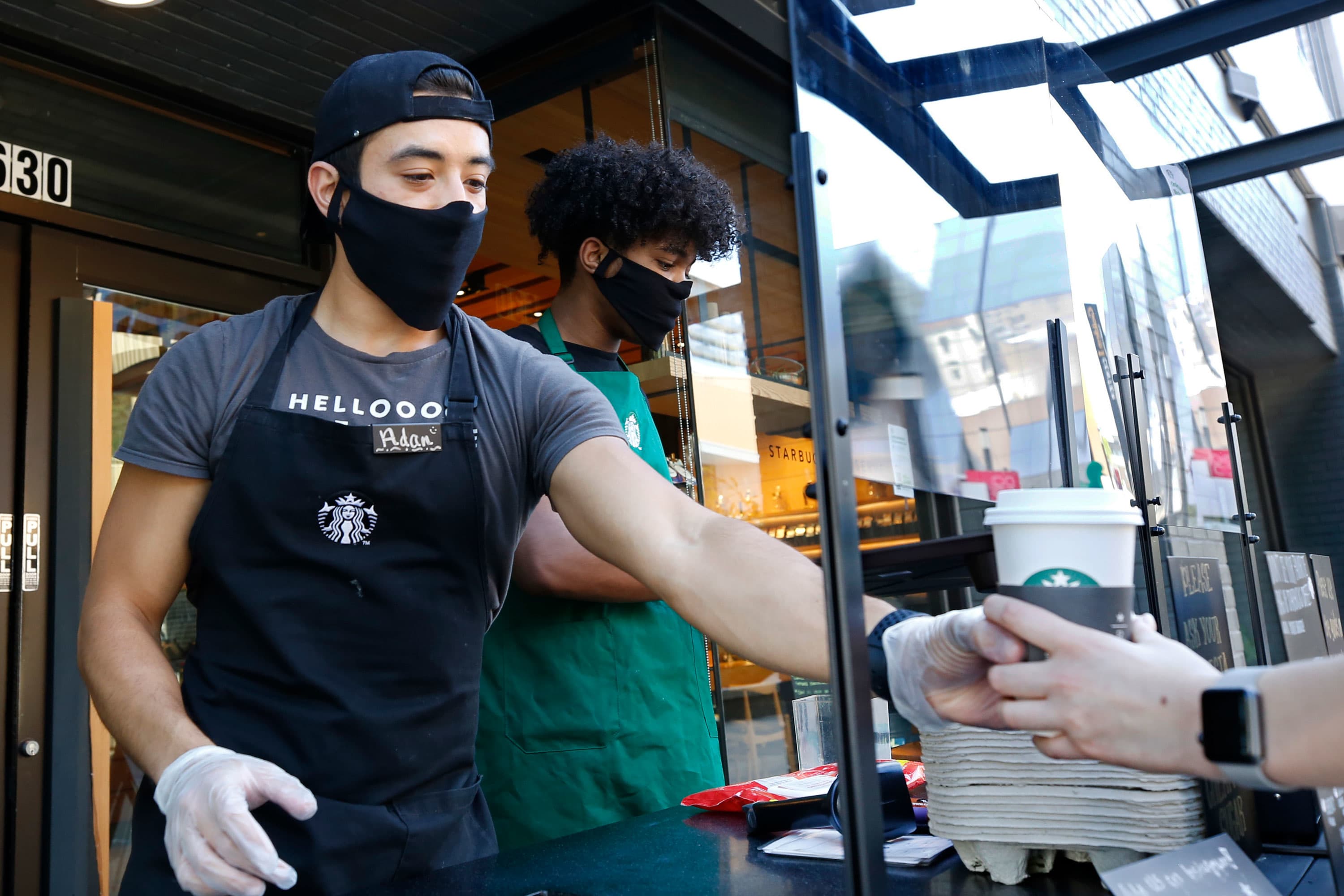
Starbucks shift supervisor Adan Miranda wears a face mask as he serves a drink to a customer while standing behind a plexiglass shield in a booth outside the store in Sacramento, Calif., Thursday, May 21, 2020.
Rich Pedroncelli | AP
Starbucks on Thursday reported quarterly revenue that fell short of expectations as Covid-19 resurgences in China weakened sales.
As the global coffee chain battles rising costs and the continued impact of the pandemic, it shared its forecast for fiscal 2022. Its outlook for earnings per share fell short of Wall Street’s estimates, but its revenue prediction topped expectations.
Shares of the company fell more than 4% in extended trading.
Here’s what the company reported for the quarter ended Oct. 3 compared with what Wall Street was expecting, based on a survey of analysts by Refinitiv:
- Earnings per share: $1 adjusted vs. 99 cents expected
- Revenue: $8.1 billion vs. $8.21 billion expected
Starbucks reported fiscal four-quarter net income of $1.76 billion, or $1.49 per share, up from $392.6 million, or 33 cents per share, a year earlier.
Excluding the gains from the sale of its South Korean joint venture and an extra week in the reporting period, the coffee giant earned $1 per share, topping the 99 cents per share expected by analysts surveyed by Refinitiv.
Net sales rose 31% to $8.1 billion, falling short of expectations of $8.21 billion. Global same-store sales climbed 17%, missing StreetAccount estimates of 18.3%.
U.S. same-store sales increased by 22% in the quarter, and rose 11% on a two-year basis. Customers spent 3% more on transactions on average. The company’s loyalty program reported 24.8 million active members, up 28% from a year earlier. During the quarter, 51% of customers were Starbucks Rewards members.
McDonald’s, Domino’s Pizza and Chipotle Mexican Grill are among the restaurant chains that said staffing challenges dented their latest quarter’s U.S. results. On Wednesday, Starbucks announced it will hike its employees’ wages at least twice in 2022, bringing the pay floor to $15 an hour faster than previously shared.
Growth in Starbucks’ international markets was muted. International same-store sales grew by 3%.
In China, the company’s second-largest market, same-store sales shrank by 7%. Starbucks previously predicted flat Chinese same-store sales growth for the quarter. Cities with local Covid-19 cases were hit the hardest by the resurgence of the virus, but cafes that rely on tourism and travel were also hurt.
“At its peak in mid-August, approximately 80% of our stores in China were impacted by the pandemic,” CEO Kevin Johnson told analysts.
The company added 538 net new locations during the quarter. Starbucks has been updating its store footprint, closing some cafes and opening new ones that are better designed for mobile and to-go orders.
Looking to the holiday season, Johnson said that the company is preparing for record-breaking sales. Starbucks is anticipating $3 billion will be added to gift cards.
For fiscal 2022, the coffee chain is anticipating its GAAP earnings per share to shrink by 4% and adjusted earnings per share to rise by at least 10%. Its outlook for earnings falls below Wall Street’s expectations of $3.73, which is more than 15% higher than fiscal 2021. The company said earnings will be at their lowest point in the fiscal second quarter because of wage hikes, but profits will reach their peak by the next quarter.
Starbucks is expecting global same-store sales in the high single digits and net sales of $32.5 billion to $33 billion, above Wall Street’s estimates of $32.07 billion. The company plans to add approximately 2,000 net new cafes to its global footprint. Roughly three-quarters of those new locations are expected to be built outside of the U.S.
The company also announced it would resume its share buyback program during its fiscal first quarter.




